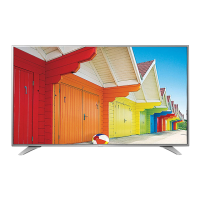10
ENGLISH
Viewing 3D imaging (Only
3D models)
CAUTION
tChildren should be supervised by an
adult when viewing 3D video. If a child
experiences eye fatigue, headaches or
blurred vision while watching 3D, they
should take a break, before they resume
watching 3D content.
tWhen viewing a 3D video, some may
experience discomfort such as a headache,
dizziness, fatigue, or blurred vision. In this
case, stop watching the 3D video and take
a rest.
tIf you watch a 3D video for a long time, you
may experience eye fatigue. In this case,
stop watching the 3D video and take a rest.
tOnly use LG 3D glasses. Otherwise, you may
not be able to view 3D videos properly.
tDo not use 3D glasses instead of your
normal glasses, sunglasses, or protective
goggles.
tDo not keep your 3D glasses in extremely
high or low temperatures. It will cause
deformation.
tDo not use 3D glasses while walking or
moving around. It may cause an accident or
injury.
tBe careful not to poke your eye with the
frames of the 3D glasses.
tDo not watch 3D content if you have
photosensitive seizures, epilepsy, or heart
disease.
Preparing
NOTE
tIf the TV is turned on for the rst time
after it was shipped from the factory,
initialization of the TV may take a few
minutes.
tImage shown may dier from your TV.
tYour TV’s OSD (On Screen Display) may dier
slightly from that shown in this manual.
tThe available menus and options may dier
from the input source or product model that
you are using.
tNew features may be added to this TV in the
future.
tThe items supplied with your product may
vary depending on the model.
tProduct specications or contents of this
manual may be changed without prior
notice due to upgrade of product functions.
tFor an optimal connection, HDMI cables
and USB devices should have bezels less
than 10 mm thick and 18 mm width. Use an
extension cable that supports USB 2.0 if the
USB cable or USB memory stick does not t
into your TV’s USB port.

